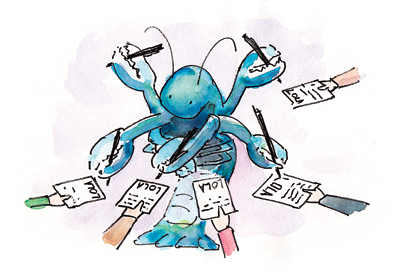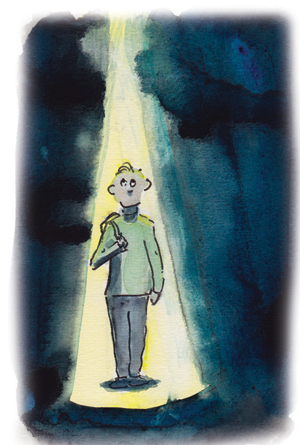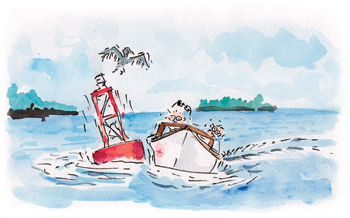Inboard and in command
Labor day has come and gone, and with it our intra-family divvying up of the high season. With an eye toward the tropics and a late hurricane, we have called our friends at Six River Marine to come and haul Grandmother’s Launch, an 18' Pointer hull custom-finished to my mother’s specifications. One thing that makes that boat special for me is that it resembles a 24' Norman Hodgdon inboard launch we owned in the 1960s, although the Pointer is smaller and outboard-powered.
The Hodgdon launch was my first inboard command. I was allowed to “solo” at the age of 12 and take it to fetch the newspaper, mail, or groceries in Boothbay Harbor. A childhood friend from that era recently showed me a listing for what appeared to be the same boat, beautifully restored and sporting a center console instead of the forward seats and steering station. If you have a child of about 12, I suggest you call Cannell, Payne & Page in Camden, Maine, and snap it up. It will lead to a lifelong addiction to Maine boats and probably a position at this magazine in another 50 years or so.
Enough nostalgia, now for the really important news from the late-summer porch.
Over the bar
The Maine Boats, Homes & Harbors family lost a member in August with the passing of Iver Lofving, noted architect, teacher, passionate sailor, gardener, carpenter, model-maker, husband, father, and writer who was equally at ease with sailing or architecture as the subject. He was much admired as a contributing editor at MBH&H, adding an authoritative voice to the magazine as it became Maine Boats, Homes & Harbors. He was, as a friend of mine would say, “well-rounded at a high level.” In his case, a very high level. He left a large and loving family and an even larger group of admirers.
Step right up, ladies and gents
There is an interesting sideshow at the Maine State Aquarium in Boothbay Harbor, which must be unique to this facility. Of course I speak of the mutant lobster collection, sort of the X-Men of Homarus Americanus.
Going on display at the aquarium as I write is the now-famous, six-clawed lobster named Lola, donated by Hyannis, Massachussetts-based lobstermen Richard Figuerido and Peter Brown. A friend sent the story from the WBZ news website, but it has been picked up everywhere from the Huffington Post to Ann Coulter’s chat site, showing universal, bipartisan appeal. Clearly, Lola’s bridging of the political divide is a sign from the spiritual world, in addition to potentially setting the claw meat record for a four-pounder.
 All illustrations by Ted Walsh
All illustrations by Ted Walsh
We look forward to the comic book series featuring Lola and the X-Lobs using their supernatural mutant powers to fight climate change, marine pollution, and other despoilments of the oceans. We’re apt to lose Ann Coulter’s readers at climate change, but there are other potential readers out there. Here on the porch, we are prepared to provide endless plot lines and dialogue to the cartoonists. We have thought of dozens so far, although none were remembered in the morning.
Clinton, cobia, and veggies
What do Bill Clinton and cobia fish have in common? I was reading in the AARP magazine (at a doctor’s office, I certainly don’t get it at home) about Clinton’s diet since his heart scares. It seems that the Big Mac President has become a vegan, lost 30 pounds and is in great health. I, of course, naturally associated this news with another article from the Washington Post about how farm-raised carnivorous cobia have gone veggie as well. Cobia is a popular farmed fish in Asia and Europe, and is a prized sport fish in the United States.
The cobia did not have a Clinton-esque epiphany and decide to go veggie; Baltimore-based researchers set out to prove that a carnivorous fish could be grown with largely vegetable-based feed, thereby avoiding the ever-diminishing equation of feeding fish to other fish to make protein. The fish being caught and so used as feed are generally menhaden, a.k.a. pogies, which are at the base of numerous food chains. They are overfished in their principal habitat, the Chesapeake Bay, according to everyone but the company that catches most of them, Omega Protein.
Scientists point out that fish don’t care where they get their nutrients, as long as they are in balance with their needs and taste good. Trimmings from other fish-processing activities are added to improve the taste of the pellets, but the nutrients are from non-meat sources. I once read the label on some chicken sausages I was eating as a red meat alternative; the small print read: “pork added for flavor.” I feel your pain, my finned friends.
The green crab menace
Herein we cleverly tie together a task for the mutant lobsters and a source of flavor for farmed fish meal: fighting the green crab menace. I had never realized that the ubiquitous green crab was an invasive species, probably introduced from Europe in the 1880s, according to the Department of Marine Resources. Not only are they invasive, mild winters of late have allowed the crabs’ numbers to explode and threaten the soft shell (steamer) clam population. Please say it isn’t so!

We all have had some experience in our lives when we were not taken seriously while reciting a true story. I am sure that the participants in this conference had experiences that defied explanation. So in the spirit of understanding, we have decided not to take sides on the porch with regard to alien abduction. Personally I find it no more farfetched than the readily accepted spiritual beliefs of many of my fellow non-abductees. What I really wondered about the conference was: what was in the swag bags? See you out there.
Striper tales
One of our favorite topics on the porch is the striped bass, which in most summers is the only fish of size available to the near-shore angler in Maine. And, like many of us, they are summer residents only, save for a small spawning population in the Kennebec River. But finding out if the one you just caught was born in Maine’s Merrymeeting Bay (inland confluence of the Androscoggin and Kennebec Rivers) or Maryland’s Susquehanna Flats can be tough, especially for those of us who don’t catch very many.
The Coastal Conservation Association of Maine and The Gulf of Maine Research Institute are collaborating on a data collection project called Snap-A-Striper. Conservancy members carry 3x5 data cards, which they fill out and photograph next to the fish and send to the research institute. If the fisherman decides to harvest the fish he is asked to freeze the head and drop it off at pickup points for GMRI. There is no prize for collecting the most heads.
Growth rings in the earbone (otolith) provide the age, and chemical analysis provides clues as to where the fish traveled. The photo supplies data on body shape (morphometrics), which tells us, in GMRI’s words, whether the fish lived a “migratory or resident lifestyle.” The latter is much easier to do simply by smelling the fish’s breath for signs of Allen’s Coffee Flavored Brandy.
Calling all Tonkas
Like many kids we grew up with a sandbox. At some point it was augmented by a small pile of loam that my dad never quite moved to its intended spot. Between the sandbox and the adjacent pile of dirt, we had the perfect playground for refining earthmoving skills with our Tonka trucks, loaders, and bulldozers. None of the toys remain, probably passed along to other families with small children. The memories of those toys were recently stirred by an article in the Bangor Daily News about the Tonka Truck Restoration Project created by Searsport’s Joe Plummer. He is gathering up old Tonka toys to give to children so they can participate in the project.

Two local companies, Searsport Motor Co. and Searsport Automotive and Tire, are donating time and materials to help the youngsters restore the toys. The kids get to work with professional mechanics to repair and repaint the toys and enter their completed projects for judging at Searsport’s “Fling into Fall” days, October 11-12. The toys will be displayed in the Antique Car Show. Adults may participate, but are ineligible for prizes. It makes me want to find a few old Tonkas myself and get to work. By the time you read this, let’s hope images of the resulting work have been posted somewhere so we can see the results.
Buoys, budgets, and going aground
An article in the Working Waterfront highlighted the budgetary struggles of the Coast Guard under its sharply reduced operating budget: 25% less than last year, according to a Coast Guard spokesman. To most of us the most obvious signs of the Coast Guard mission are the aids to navigation, which we rely on day and night to keep us off the bricks.
There is a tight little channel between Cousins and Chebeague islands in Casco Bay where an important lighted navigation aid was without its light for a time. It was repaired only after complaints by ferry service users who reminded the Coast Guard of a recent fatality in the same place. Light failures are noted by the Coast Guard and a service vessel is sent out when there are a number of aids to repair—certainly a logical approach in lean times.
Oddly enough, one of the increasing types of accidents is buoy strikes by boats as a result of the remarkable accuracy of GPS chartplotters interfaced with autopilots. We expect lighted buoys to be lit and often get complacent, even though we know better. I have many times disengaged an autopilot because it appeared we were aiming directly at an aid. The two times I have hit granite in Maine were in waters I knew well and where, as a result, I was taking less care with my navigation than usual.
I started my writing career for this magazine by recounting a grounding in my just-purchased Wilbur 38. After another mishap some months later, I hauled the same boat out and asked the guys in the yard what they thought of the damage. “Not bad, but enough for another article,” was the reply. Everybody’s a comedian.
Even the pros do it
One boating accident this summer on a crewed charter yacht made my bones shiver in sympathy. The 70' professionally crewed sloop Archangel plowed into a pile of granite under full sail transiting from Camden to Pulpit Harbor, in broad daylight and with the best of navigational equipment on board. There were non-life-threatening injuries and the boat lost its mast, but remained relatively undamaged otherwise. My fellow scribbler in this magazine Ben Ellison included a discussion of the navigational context on his website, www.panbo.com, in the August 2013 archive. The grounding seems to have been the result of human error.
Speaking of Mr. Ellison, his site is easily one of the best resources for information about marine electronics. I envy his ability to demystify the subject. You will too.
In closing, remember that the rockers are now in place at Mile Zero on the Intracoastal, and we have the same standards for snowbirds headed south as we demanded in Maine. Plus we have switched to 10 power binoculars in case you try to sneak by on the east side of the Elisabeth River.
Two months ago you closed the house
Packed the boat and headed south.
Left New England, then the Sound
Southbound with the hammer down.
Sometimes it is such a chore
To motor down the Jersey Shore
But you will always want to stay
A little longer in Cape May.
And then you have those balmy weeks
Poking down the Chesapeake
At long last you stop and stay
At Portsmouth, in Crawford Bay.
“Look,” you’ll say, “those people on the porch,
Pointing fingers, holding forth.”
Noisily they rock unsteady
Feet up, binoculars at the ready.

Long-time MBH&H Long-time contributing editor and amateur chef Peter Bass is working on his recipe for flash—fried green crabs with hot chili sauce, to be known as Green Crab Menace. Look for it soon in a dive bar near you. To submit your comments... newsy tidbits, photos, illustrations, clippings, rants, and raves for possible use in this column, use the form below. Or mail to “View From the Porch,” P.O. Box 566, Rockland, ME 04841 or fax to 207-593-0026. Items may be edited for length and clarity; materials become the property of Maine Boats, Homes & Harbors, Inc.
 All illustrations by Ted Walsh
All illustrations by Ted WalshJust as we were thinking that sitting on a porch in Maine couldn’t be beat, we learned there was an alien-abduction conference going on.
Well it is, and the DMR is on the case, sponsoring a survey to gauge numbers of green crabs. There is no current commercial use for them, but bait and aquaculture feed have been suggested. (“Crab added for flavor.”) This brought to mind two crab memories. We once met some friends, who are regulars on the summer porch, at the Miami Boat Show, and of course spent more time eating in South Beach than boat shopping. One of the treats we remembered was crispy, flash-fried, very small, whole crabs served as an appetizer with a dipping sauce. I believe they are called Sawagani. That is a Japanese freshwater crab served this way in sushi restaurants, although I don’t think this was the species in South Beach. Perhaps the green crab would be good for this. I also remembered eating small, whole, boiled green crabs on a solo at Hurricane Island Outward Bound School—better than kelp.
So let’s train the mutant lobsters to round up the green crabs, or better yet, find something remunerative for our grandchildren to do in the summer at low tide. If you can’t beat ’em, eat ’em.
Mulder & Scully come to Portland
Speaking of invasive species, a recent article in the Portland Press Herald caught our eyes. Just as we were thinking that sitting on a porch in coastal Maine couldn’t be beat, we learned that there was an alien abduction conference going on at the Clarion Hotel in Portland. Evidently 80-odd, I mean 80-some, people who had experienced actual alien abduction attended.



Long-time MBH&H Long-time contributing editor and amateur chef Peter Bass is working on his recipe for flash—fried green crabs with hot chili sauce, to be known as Green Crab Menace. Look for it soon in a dive bar near you. To submit your comments... newsy tidbits, photos, illustrations, clippings, rants, and raves for possible use in this column, use the form below. Or mail to “View From the Porch,” P.O. Box 566, Rockland, ME 04841 or fax to 207-593-0026. Items may be edited for length and clarity; materials become the property of Maine Boats, Homes & Harbors, Inc.
Magazine Issue #
Display Title
View from the Porch
Secondary Title Text
Issue 127
Sections






